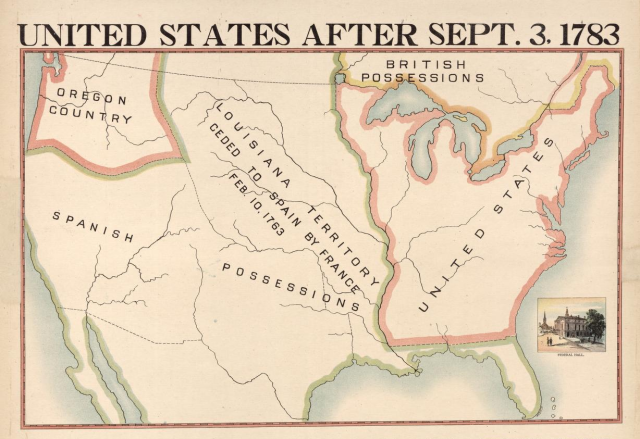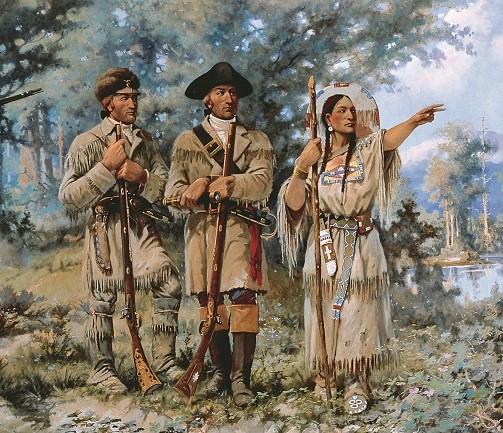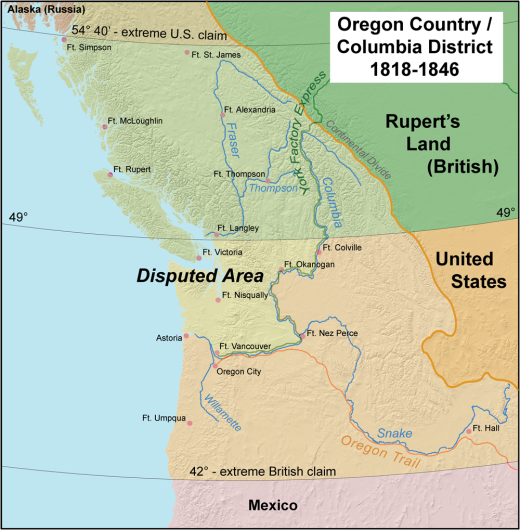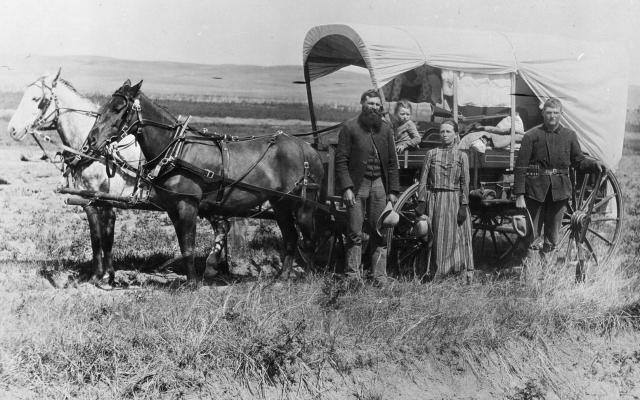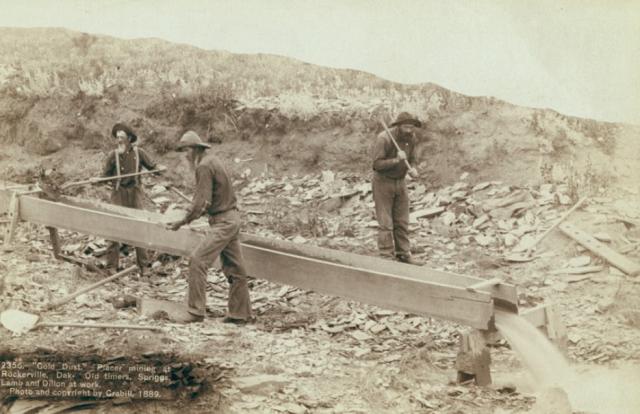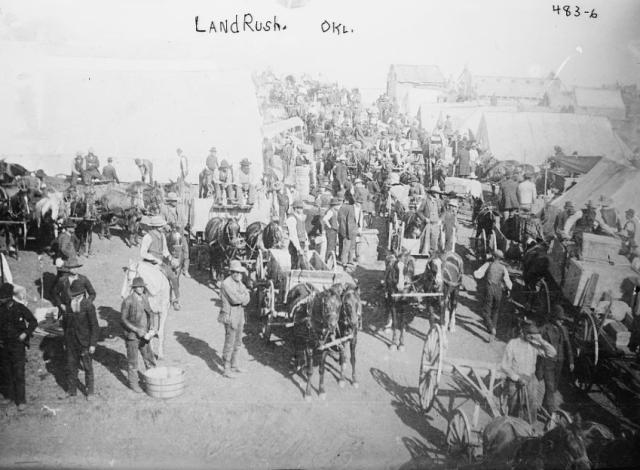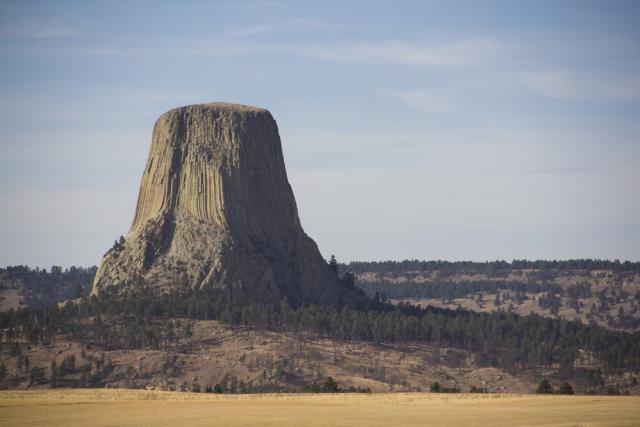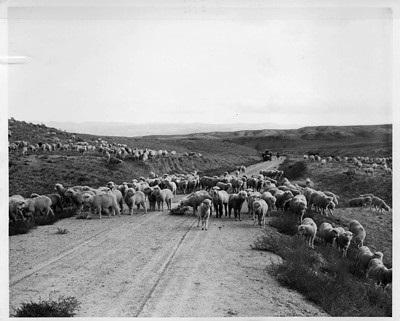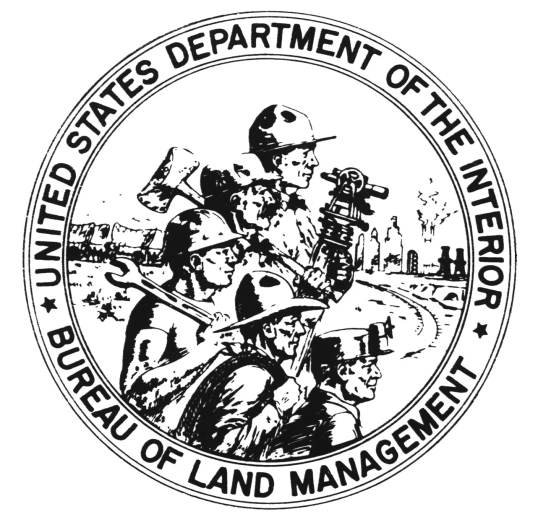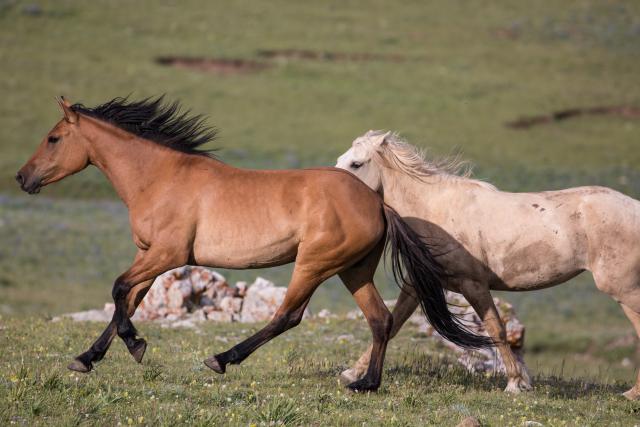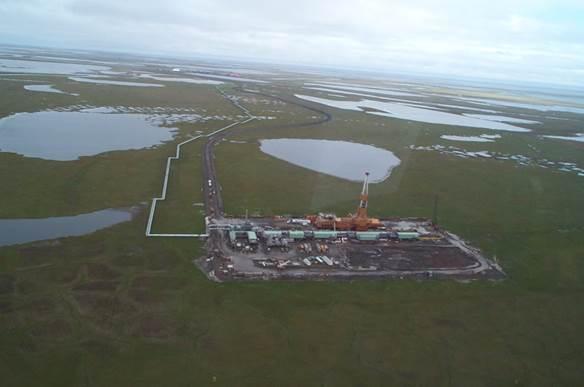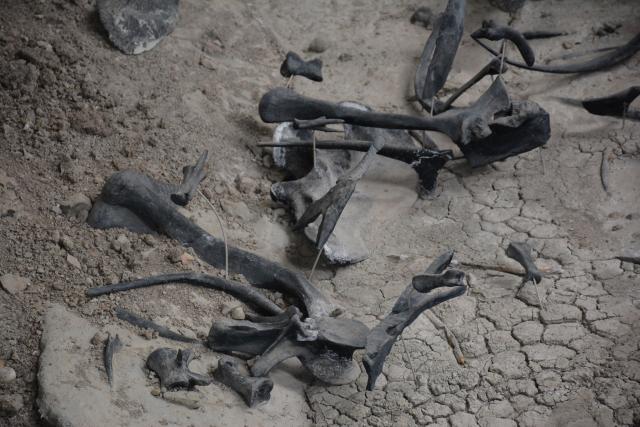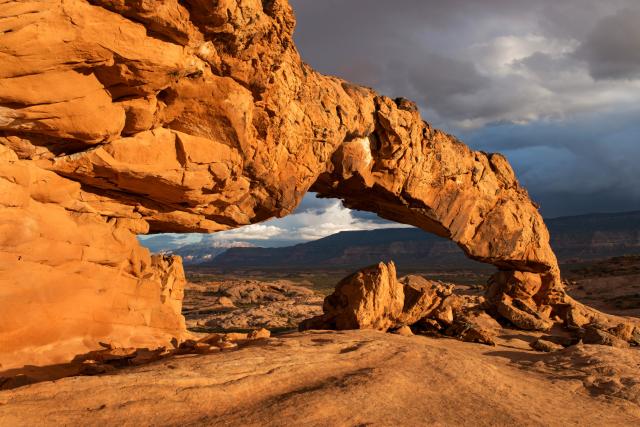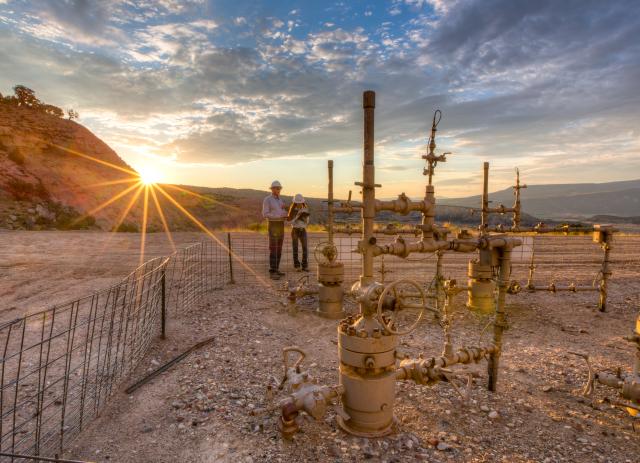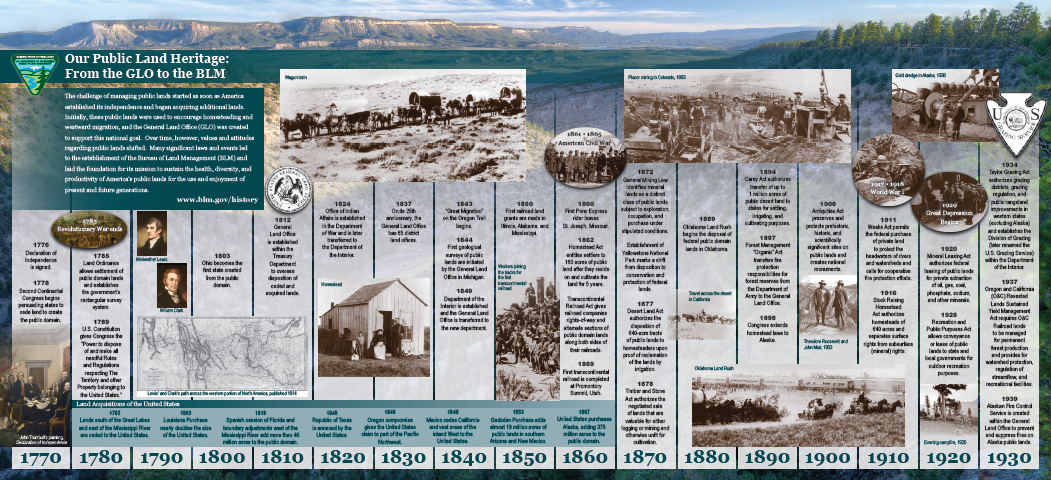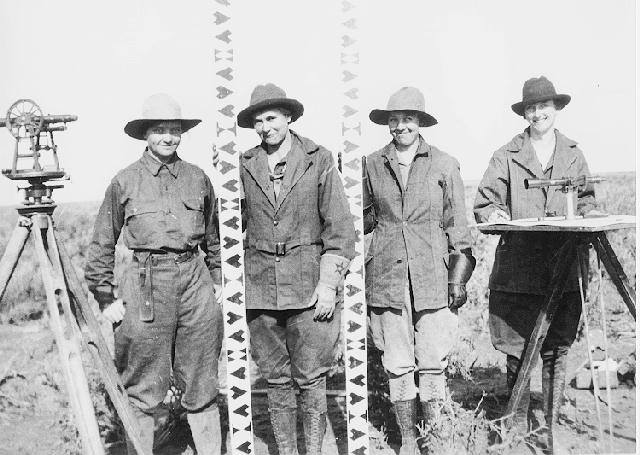National Timeline
With historical roots dating back to the earliest days of the nation, the BLM administers the lands that remain from America's original "public domain." Created in 1946 through a government reorganization during the Truman Administration, the BLM is the successor to the General Land Office (established in 1812) and the U.S. Grazing Service (originally called the Division of Grazing and renamed in 1939).
In 2021, the BLM is commemorating two milestone events: the 75th diamond anniversary as an Interior Department agency and the 45th anniversary of the principal law defining its mission: the Federal Land Policy and Management Act of 1976 (commonly referred to by its acronym of FLPMA).
As the manager of more land (245 million surface acres or one-tenth of America’s land base) and more subsurface mineral estate (700 million acres) than any other government agency, the BLM carries out a dual mandate under FLPMA: that of managing public land for multiple uses (such as energy development, livestock grazing, mining, timber harvesting, and outdoor recreation) while conserving natural, historical, and cultural resources (such as wilderness areas, wild horse and wildlife habitat, artifacts, and dinosaur fossils). In the language of FLPMA, the BLM's responsibility is to administer public lands “on the basis of multiple use and sustained yield” of resources.
What this means, on a practical level, is that the BLM – except in areas specifically set aside for conservation purposes – must multitask to fulfill its duties. Nevertheless, consistent with the BLM’s goal of good stewardship of public land resources, “multiple use” does not mean every use on every acre.
Below is a timeline of the BLM's history, which is primarily marked by the enactment of legislation that has guided the agency's mission, culminating in the passage of FLPMA, the BLM's legislative "charter," in 1976.
BLM Timeline
1783
Lands south of the Great Lakes and east of the Mississippi River are ceded by Britain to national government of Confederation
1788
Gives Congress the “power to dispose of and make all needful rules and regulations respecting the territory or other property belonging to the United States...”
1803
Ohio becomes first state created from the public domain.
1804-1806
1812
General Land Office, responsible for all public land sales, patents, and entries, is established within Treasury Department to oversee disposition of ceded and acquired lands. (As successor agency to the GLO, the BLM maintains more than nine million historical land documents: survey plats and field notes, homestead patents, military warrants, and railroad grants. Many of these records can be found at: www.glorecords.blm.gov.)
1819
Spanish cession of Florida and boundary adjustments west of the Mississippi River add more than 46 million acres to the public domain.
1845
Republic of Texas, which had declared its independence from Mexico, is annexed by the United States.
1846
Oregon Treaty with Britain gives the United States claim to part of the Pacific Northwest
1848
Mexico cedes California and vast areas of the inland West to the United States
1853
Gadsden Purchase adds nearly 19 million acres of public land in southern Arizona and New Mexico
1862
Homestead Act entitles Western settlers to 160 acres of public land after they reside on and cultivate the land for five years. (On Jan. 1, 1863, Daniel Freeman and 417 others file the first homestead claims. By 1934, over 1.6 million homestead applications are processed, passing more than 270 million acres of public domain into private ownership.)
1862
Transcontinental Railroad Act gives railroad companies rights-of-way and alternate sections of public domain lands along both sides of their railroads
1867
United States purchases Alaska from Russia for $7.2 million, adding 375 million acres to the public domain.
1872
General Mining Law identifies mineral lands as a distinct class of public lands subject to exploration, occupation, and purchase under specified conditions
1877
Desert Land Act authorizes the disposition of 640-acre tracts of public lands to homesteaders upon proof of reclamation of the lands by irrigation
1878
Timber and Stone Act authorizes negotiated sale of public lands that are valuable for either logging or mining and otherwise unfit for cultivation
1889
Oklahoma Land Rush begins the disposal of public domain lands in Oklahoma
1894
Carey Act authorizes transfer of up to one million acres of public desert land to states for settling, irrigating, and cultivating purposes.
1897
Forest Management “Organic” Act transfers fire protection responsibilities for forest reserves from the Department of Army to the General Land Office.
1906
Antiquities Act preserves and protects prehistoric, historic, and scientifically significant sites on public lands through creation of national monuments
1916
Stock Raising Homestead Act authorizes homesteads of 640 acres and separates surface rights from subsurface (mineral) rights
1920
Mineral Leasing Act authorizes Federal leasing of public lands for private extraction of oil, gas, coal, phosphate, sodium, and other minerals
1926
Recreation and Public Purposes Act allows conveyance or lease of public lands to state and local governments for outdoor recreation purposes
1934
Taylor Grazing Act authorizes grazing districts, regulation of grazing, and public rangeland improvements in Western states (excluding Alaska) and establishes Division of Grazing (later renamed U.S. Grazing Service) within the Department of the Interior
1937
Oregon and California (O&C) Revested Lands Sustained Yield Management Act requires O&C Railroad lands to be managed for permanent forest production and provides for watershed protection, regulation of streamflow, and recreational facilities
1942
During World War II, extensive withdrawal of public lands for military purposes begins, with more than 13 million acres withdrawn in two years
1946
BLM is established within the Department of the Interior through the consolidation of General Land Office and U.S. Grazing Service
1953
Outer Continental Shelf Lands Act authorizes Secretary of the Interior to lease mineral lands more than three miles offshore. The BLM assumes responsibility for leasing through competitive sales.
1954
Recreation and Public Purposes Act amends the 1926 Act and allows sale and lease of public lands for purposes besides recreation.
1955
Multiple Surface Use Act withdraws common varieties of minerals from entry as mining claims and allows claim owners to use the surface for mining operation purposes only.
1959
Wild Horse Protection Act (also known as the "Wild Horse Annie Act") prohibits hunting of wild horses and burros on public land by aircraft or motor vehicles.
1964
Wilderness Act protects undeveloped Federal land to preserve its natural condition.
1965
Land and Water Conservation Fund is established for Federal acquisition of outdoor recreation areas.
1966
National Historic Preservation Act expands protection of prehistoric and historic properties.
1968
Wild and Scenic Rivers Act and National Trails System Act preserve sites with outstanding natural, cultural, scenic, historic, and recreational significance.
1969
National Environmental Policy Act requires Federal agencies to assess the impacts of their actions on the environment.
1971
Alaska Native Claims Settlement Act provides for settlement of aboriginal land claims of Alaskan Natives and Native groups. The BLM is tasked with the largest U.S. land transfer effort ever undertaken.
1971
Wild Free-Roaming Horses and Burros Act mandates protection and management of these animals on public lands managed by the BLM and U.S. Forest Service.
1973
Endangered Species Act requires the conservation of threatened and endangered plants and animals and the ecosystems on which they depend.
1975
Energy Policy and Conservation Act addresses energy demands and establishes a strategic petroleum reserve.
1976
Federal Land Policy and Management Act (FLPMA, the BLM's legislative "charter") repeals homestead laws and establishes policy of retaining public lands in Federal ownership. FLPMA requires that these lands be managed for multiple uses and sustained yield through land-use planning.
1976
1977
Surface Mining Control and Reclamation Act ensures environmental safeguards for mining and reclamation of mined areas.
1978
Public Rangelands Improvement Act requires inventory, determination of trends, and improvement of public rangelands.
1979
Archaeological Resources Protection Act requires permits for excavation or removal of these resources from Federal lands and sets criminal and civil penalties for violations.
1980
Alaska National Interest Lands Conservation Act designates millions of acres of public land in Alaska as wilderness, national parks, national wildlife refuges, and wild and scenic rivers. Act also provides for subsistence use by rural Alaska residents.
1980
The BLM completes its first resource management (land-use) plan, covering the California Desert Conservation Area, and designates its first areas of critical environmental concern in Utah and California.
1987
Federal Onshore Oil and Gas Leasing Reform Act establishes a new leasing system and changes certain operational procedures for onshore resources on Federal lands.
1990
Northern spotted owl is listed as a threatened species under the Endangered Species Act, leading to enjoinment of all Federal timber sales within its range.
1996
Grand Staircase-Escalante National Monument in Utah is designated by President, representing first such monument under BLM management.
2000
National Landscape Conservation System, consisting of wilderness areas, wilderness study areas, national monuments, and other conservation-related units on BLM-managed land, is established by Secretary of the Interior.
2005
Energy Policy Act promotes energy efficiency and the production of secure, affordable, and reliable domestic energy
2009
Omnibus Public Land Management Act officially authorizes National Landscape Conservation System and sets penalties for unauthorized removal of paleontological resources from Federal lands.

